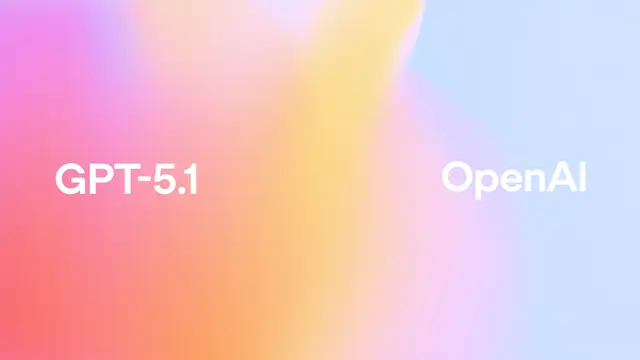Meta Notebook Llama
Meta Llama 3.1 is an open-source large language model available in 8B, 70B and 405B versions that can be fine-tuned, distilled and deployed anywhere.
https://llama.meta.com/

Product Information
Updated:Jul 16, 2025
Meta Notebook Llama Monthly Traffic Trends
Meta Notebook Llama achieved 39,954 visits with a 20.2% growth in visits. The release of Llama 4 in April 2025, with its multimodal and multilingual capabilities, likely contributed to this moderate growth. The LlamaCon developer conference and Meta's $80 billion investment in AI may have also increased interest and traffic.
What is Meta Notebook Llama
Meta's Llama series, the core of its AI language model initiative, has evolved from Llama 1 to the latest Llama 3.2, catering to researchers, developers, and businesses with its open-source foundation and instruction-tuned models. The latest versions, Llama 3.1 and 3.2, offer diverse sizes, ranging from the lightweight 1B and 3B for mobile devices to the robust 405B models rivaling closed-source counterparts like GPT-4. Building on these models, Meta launched NotebookLlama on October 27, 2024, as an open-source alternative to Google's NotebookLM, designed to generate podcast-style summaries from text files, further demonstrating its commitment to accessible and versatile AI solutions.
Key Features of Meta Notebook Llama
Meta Llama 3.1 is an advanced open-source large language model available in 8B, 70B and 405B parameter sizes. It offers high performance across multiple languages, complex reasoning, and coding capabilities. The model can be fine-tuned, distilled and deployed flexibly, with options for real-time inference, batch processing, and integration with various tools and platforms.
Multiple model sizes: Available in 8B, 70B and 405B parameter versions to suit different use cases and computational resources
Open source and customizable: Freely available for research and commercial use, with ability to fine-tune, distill and deploy as needed
Advanced multilingual capabilities: Supports multiple languages for translation, reasoning and content generation tasks
Integration with tools and platforms: Can be integrated with various AI tools, cloud platforms and development frameworks
Safety features: Includes Llama Guard for content moderation and Prompt Guard to prevent prompt injection attacks
Use Cases of Meta Notebook Llama
AI assistants and chatbots: Power conversational AI applications across messaging platforms and virtual assistants
Content generation: Create articles, marketing copy, and other text content in multiple languages
Code generation and analysis: Assist developers with writing, debugging and explaining code across programming languages
Data analysis and insights: Process and analyze large datasets to extract insights and generate reports
Language translation: Perform high-quality translations between multiple language pairs
Pros
Open source and freely available for research and commercial use
Flexible deployment options from local machines to cloud platforms
Strong performance across multiple languages and tasks
Large community and ecosystem of tools/integrations
Cons
Requires significant computational resources for larger models
May still produce incorrect or biased outputs in some cases
Ongoing research needed to further improve safety and alignment
How to Use Meta Notebook Llama
Choose a Llama 3.1 model: Select from the 8B, 70B, or 405B parameter versions of Llama 3.1 based on your needs and computational resources.
Download the model: Go to llama.meta.com/llama-downloads and download the chosen Llama 3.1 model weights.
Set up the environment: Install the necessary dependencies and set up your development environment to run Llama models.
Load the model: Use the Hugging Face Transformers library or Meta's provided scripts to load the Llama 3.1 model into your application.
Prepare your input: Format your input text or prompt according to the Llama 3.1 model's expected input format.
Generate output: Use the loaded model to generate text, answer questions, or perform other language tasks based on your input.
Fine-tune (optional): If needed, fine-tune the model on your specific dataset to improve performance for your use case.
Implement safety measures: Use Llama Guard or other safety tools to ensure responsible and ethical use of the model.
Deploy and scale: Deploy your Llama-powered application using cloud services like AWS, Azure, or Google Cloud for scalability.
Meta Notebook Llama FAQs
Meta Llama 3.1 is the latest version of Meta's open-source large language model. It comes in 8B, 70B and 405B parameter sizes and is designed to be fine-tuned, distilled and deployed for various AI applications.
Related Articles
Popular Articles

Why Rewritify AI Is the Best "AI Humanizer" for Undetectable, Human Like Writing in 2025
Dec 11, 2025

FLUX.2 vs Nano Banana Pro in 2025: Which one do you prefer?
Nov 28, 2025

How to Use Nano Banana Pro Free in 2025 — Complete Guide (Step-by-Step)
Nov 26, 2025

Claude Opus 4.5: The Best Model for Coding, Agents & Computer Use (Full Guide)
Nov 26, 2025
Analytics of Meta Notebook Llama Website
Meta Notebook Llama Traffic & Rankings
18.4K
Monthly Visits
-
Global Rank
-
Category Rank
Traffic Trends: Jul 2024-Jun 2025
Meta Notebook Llama User Insights
00:00:13
Avg. Visit Duration
1.25
Pages Per Visit
70.75%
User Bounce Rate
Top Regions of Meta Notebook Llama
CN: 62.82%
RU: 21.6%
TW: 10.72%
ZA: 4.85%
Others: 0%









